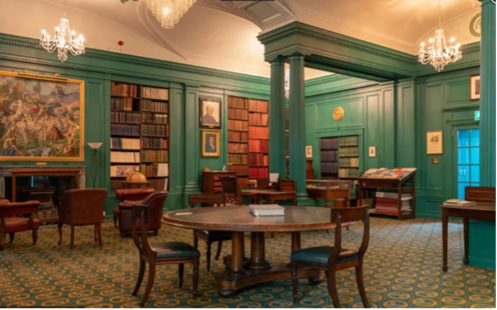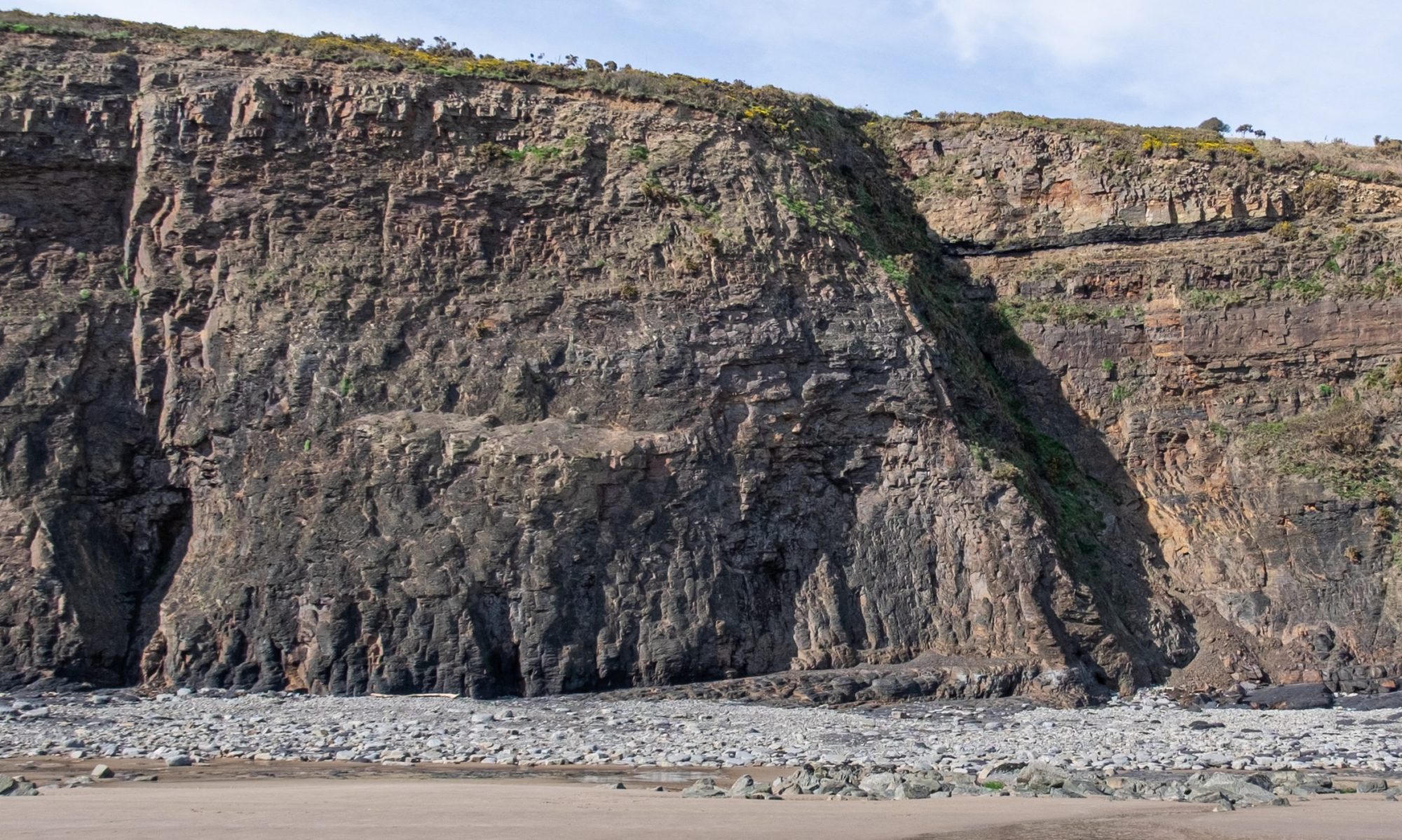4th Oct.
Colonel Martin Amlôt – Presidential Address:
Geology in Conflict
Summary: ‘A personal view by the Society President of the impact of geological factors in warfare and other lower level conflicts. As a former professional soldier Martin Amlôt has some thirty years of experience of military operations both active and potential. As he served in Northern Ireland, Norway, Africa, Cyprus, Hong Kong, the Falklands garrison and most of all, Germany during the Cold War, he became increasingly aware of the. importance of taking the impact of geology into account.
As a student of past conflicts, he realised even more that all armies throughout history have had to be aware of the constraints placed on them by the geology of the landscape over which they fight or might have to fight.
His talk will describe some of the evidence which still exists today of the geology of campaigns throughout history.’
18th Oct. Professor Phil Manning
66 Million Years ago the ‘Age of the Dinosaurs’ came to an abrupt end. This highly successful group of vertebrates had prospered for over 160 million years, but went extinct (bar their descendants the birds) at the end of the Cretaceous Period. Recognising the effects of the Cretaceous impact event are essential to understanding the global-scale collapse of ecosystems that mark the end of the age of the Dinosaurs, or the Cretaceous-Paleogene (KPg) mass-extinction. We can help resolve the timing of this global event through a newly discovered deposit in the Hell Creek Formation (North Dakota, USA).
22nd Oct
A guided tour at World Museum with Wendy Simkiss (Curator of Geology & Science, World Museum).
The displays include three dinosaur skeleton replicas, footprints (including a type specimen) from the Triassic, a display on dinosaur diets for herbivorous dinosaurs, vertebrate fossils in the ‘Bones in Stone’ display, bones and flints from the Quaternary of Kent’s Cavern and marine and plant fossils from the Palaeozoic, plus a huge Eocene palm frond – one of the best ever found.
25th Oct Dr. John Nudds
“Dinosaur eggs have been known for almost 100 years, but it is still exceptionally rare to find eggs containing any remains of their tiny embryos. I have been directing an international team of specialists which has used ground-breaking techniques to reveal these delicate fossils. Embryos from China have been identified with the enigmatic group of dinosaurs, the therizinosauroids, and the embryos have revealed much about the anatomy and affinities of these peculiar animals. Those from Argentina proved to belong to the titanosaurs, some of the largest dinosaurs ever to have walked on Earth. Their tiny skulls, not much more than a centimetre in length, have revealed some surprises!”
8th Nov. Prof. Ben Edwards
In this talk, I will provide an overview of two sequences of induced seismicity at Preston new Road, Lancashire, which directly resulted from hydraulic fracturing (fracking) by Cuadrilla Resources in 2018 and 2019. I will then detail the subsequent risk study that was undertaken, on behalf of the Oil and Gas Authority, which led, in part, to a UK-wide moratorium being established between late 2019 and 2022.
15th Nov.
The Coal Authority manages the effects of past coal and metal mining, mine water pollution and other mining legacy issues.
This talk will provide a high-level introduction to the Coal Authority and then give a geochemist’s perspective on the collaborative work that we do to remediate legacy coal and metal mine pollution.
24th Jan.
Professor Andy Plater – University of Liverpool
Sea-level rise and storms will bring about increased risk of coastal flooding. This talk explores different approaches to projecting coastal flood hazard for a series of case studies from around the UK coast, and looks at methods for assessing the consequent cost of impacts and mitigation measures.
7th Jan. Dr Heather Stewart, British Geological Survey
Exploring Hades: geomorphology and sediments of the deepest places on EarthThe deepest parts of the ocean are one of the final remaining frontiers of discovery on our planet. Much of the deep ocean is unmapped and draws in explorers, scientists, cartographers and environmentalists, keen to discover its secrets. Heather Stewart from the British Geological Survey has been lucky enough to participate on a number of expeditions to explore the deepest seafloors and will share some of what these diverse expedition teams have learned
21st Feb Dr Janine Kavanagh, University of Liverpool
“Modelling magma movement: Unexpected journeys in the field and the lab”
Rapid and reliable information is needed in the lead up to and during volcanic crises, but existing models of magma sub-surface flow are insufficient to allow this. The limitations of our understanding of how magma moves through the crust to feed volcanic eruptions weighs heavily on volcanologists as we see and experience the impact of volcanism on people around the world. The MAGMA Lab at the University of Liverpool uses a multidisciplinary approach and state-of-the-art techniques to tackle some of the key questions in volcanology with a focus on volcanic plumbing system dynamics. We are working with volcano observatories around the world to enable these combined models to be deployed to improve the accuracy and reliability of volcanic eruption forecasts.
Janine is Reader in Volcanology and UKRI Future Leaders Fellow at the University of Liverpool. She founded the University of Liverpool’s MAGMA Lab for the study of volcanic plumbing systems in 2014.
28th Feb.

Dr. Chris Stephenson, University of Liverpool:
Meteorites and Mass extinctions: size doesn’t matter!
Meteorite impacts are an established killer for the biosphere. They are thought to cause severe impact winters and trigger mass extinction events: the most famous being the end of the dinosaurs. The bigger the impact, the worse the extinction. In this talk I’ll show why this is nonsense and explain the real reason why some meteorites are benign, whilst others are lethal.
7th Mar.

Professor Richard Worden, University of Liverpool:
Ravenglass: Roman port, a miniature railway, and a geological testbed
Richard’s talk is based on a twenty year study of the sediments in the Ravenglass estuary.
It is recommended that you read Richard’s more detailed and fascinating account of this lecture available here.
14th Mar.
Geology of Whisky
Joint Meeting with the Herdman Society
This meeting will be held after the Extraordinary Meeting at 7.30 p.m. in The Athenaeum, 12-18 Church Alley, Liverpool L1 3DD.
Please note that The Athenaeum will be open to Society members from 6.30 to 9.30 p.m. for this meeting.

Lecture by Dr Stephen Cribb.
Title: ‘Geology of Whisky’
The gaelic translation of aquavitae – the water of life – is uisge beatha, from which we get the word ‘whisky’. Water is added to the mix after the barley has been malted and ground down into a ‘grist’. It’s needed again to prepare the spirit for sale, and often gets added to the finished product for taste.
Because so much water is needed, the presence of a large supply constrains where a distillery is located. Most malt whisky distilleries are located by streams or rivers, and often deep boreholes or public water supplies are be used. It’s the chemistry of the water which has such an effect on the final product, so the geological setting is important.
Stephen will outline the geology of Scotland in relation to the important malt whisky producing districts and offer new insights into the influences on the taste of a good single malt. During this evening you will have the opportunity to sample various malts and discover that the geology of the local area really does influence taste!


